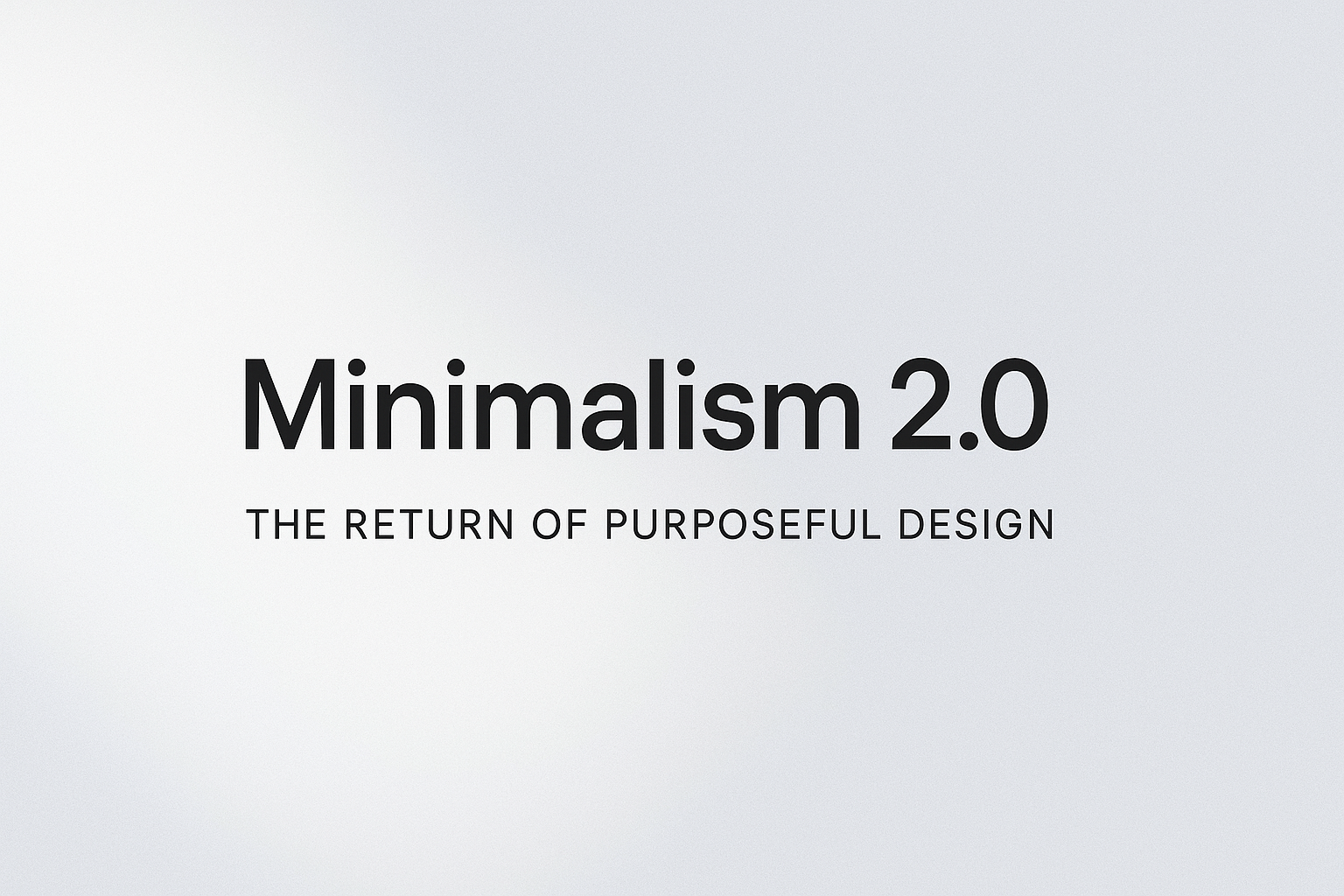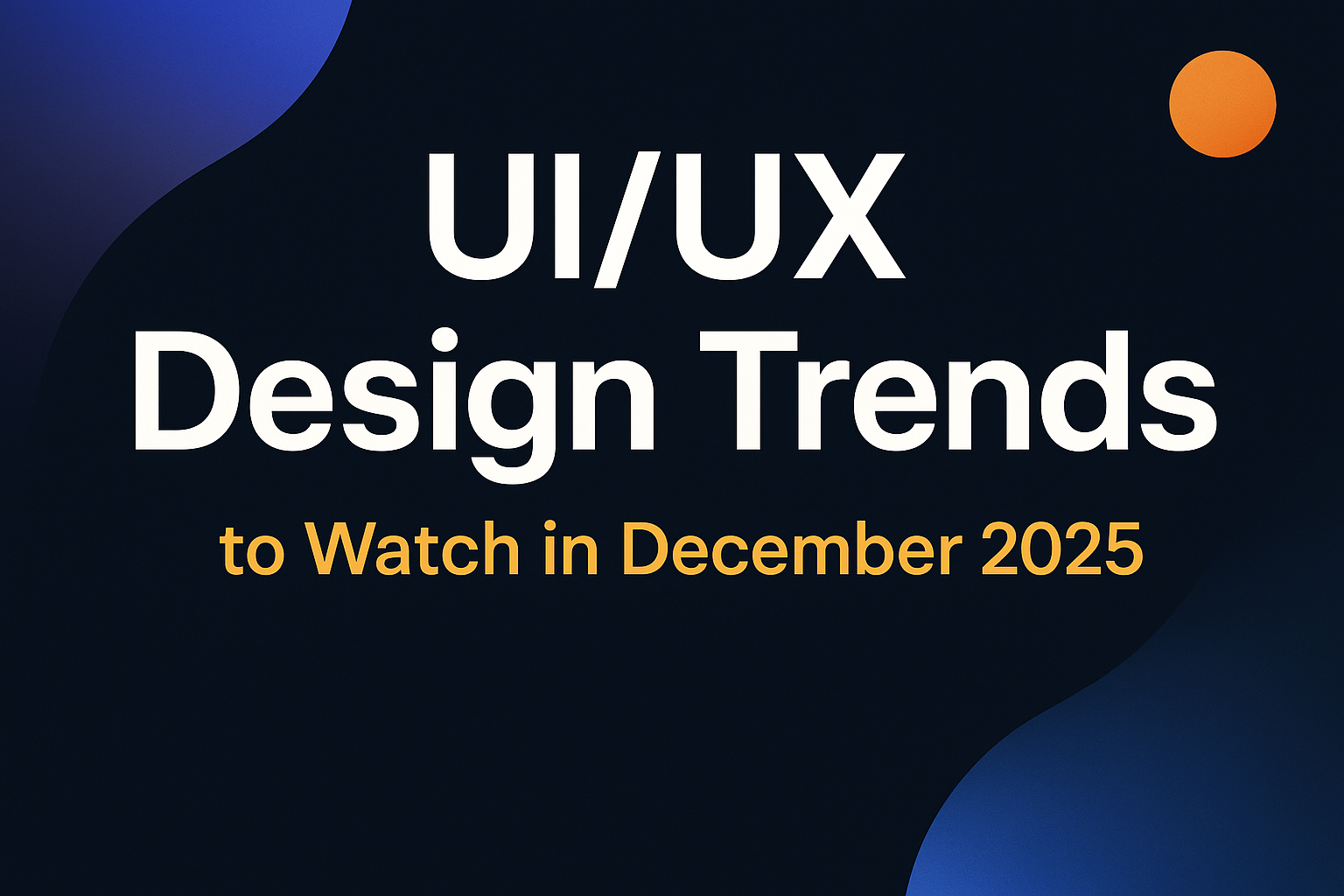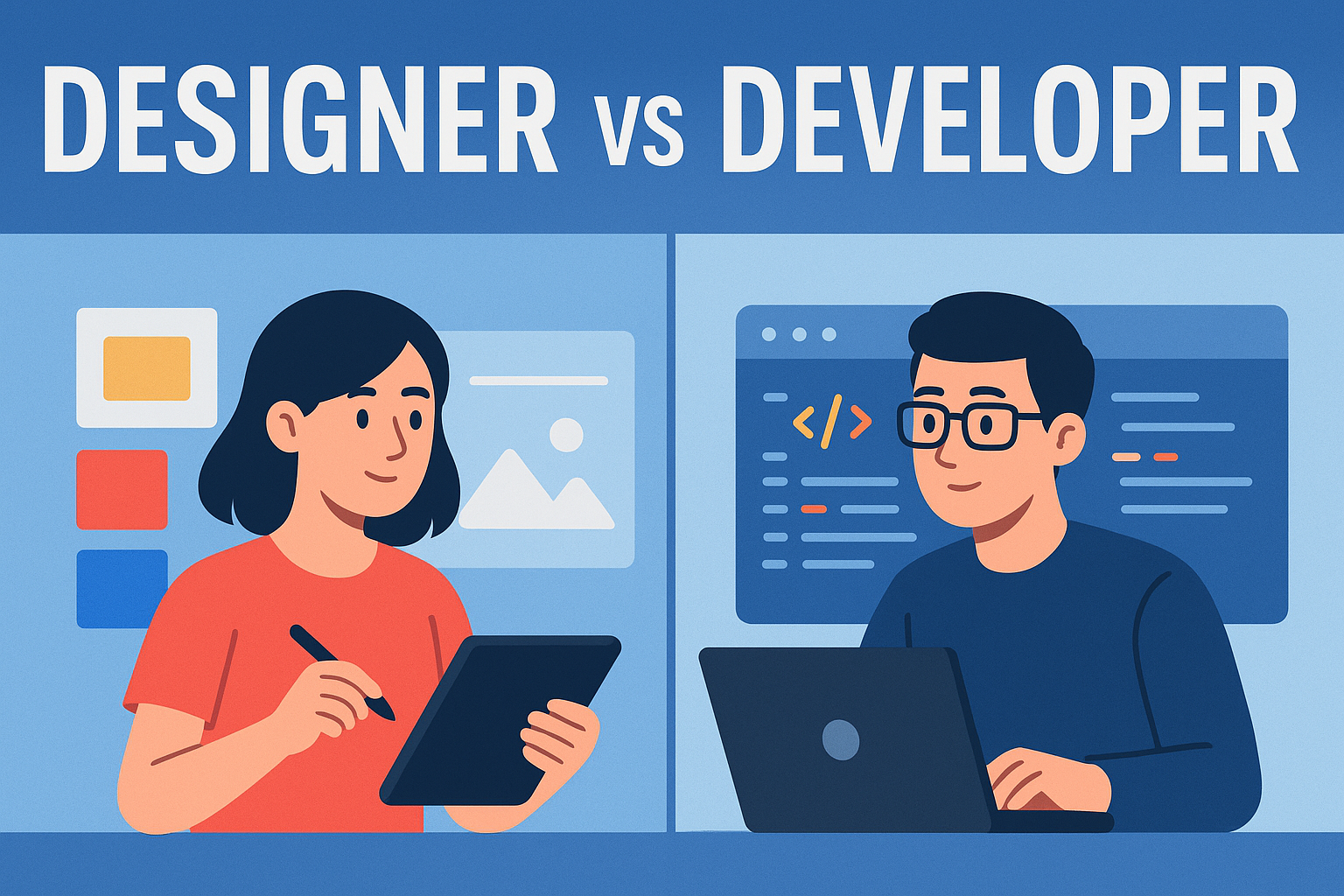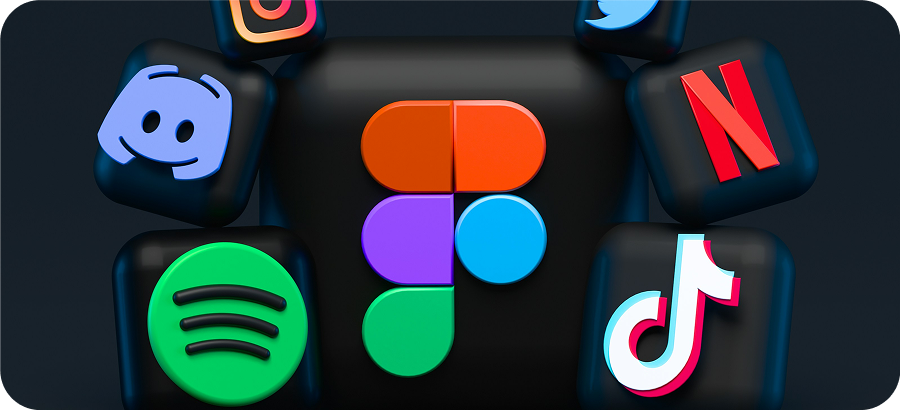Minimalism never really died — it just evolved. As we reach the end of 2025, Minimalism 2.0 has quietly become one of the strongest UI/UX movements yet. It’s not about removing things anymore. It’s about keeping what matters most — with precision, emotion, and intent.

Back in the early 2010s, minimalism meant flat colors, thin icons, and lots of white space. But over time, that purity became predictable. Everything looked the same — lifeless, sterile, and emotionless. Minimalism 2.0 breaks that. Now, minimal design isn’t about less for the sake of less. It’s about clarity for the sake of purpose. Designers are adding depth, light, and motion — just enough to make the interface feel alive while staying clean. Examples? Soft shadows and gradients replacing flat blocks. Minimal typography paired with bold hero statements. Purposeful motion guiding users instead of flashy transitions. It’s simplicity redefined with soul.
Designers in 2025 finally realized that beauty alone doesn’t make an interface work — but functionality alone doesn’t make it memorable either. The new balance is Functional Aesthetic — where every visual element earns its place. That tiny blur? It guides focus. That contrast ratio? It improves readability. That whitespace? It gives breathing room for attention. Every decision serves a function — not decoration. Minimalism 2.0 is all about stripping away noise until what’s left feels natural, useful, and beautiful.
We’ve moved past pure flatness. Designers are embracing dimensional minimalism — interfaces with light play, transparency, and realistic blur effects that add personality without clutter. This generation of minimalism feels organic and material, not digital and cold. Think of: Subtle glass morphism layers with soft depth. Light reflection gradients that mimic real surfaces. Minimal layouts infused with calm motion to create “living silence.” Minimalism 2.0 understands that depth creates emotion. It’s no longer just what you see — it’s what you feel while using it.
Minimal design fails when it hides meaning. That’s why content-first design has become the backbone of Minimalism 2.0. Designers now structure layouts to let words, visuals, and interactions speak directly. Typography takes center stage, guiding rhythm and hierarchy. Each heading, icon, and block of space supports the story — not the style. The best interfaces of 2025 feel like reading a poem: clear, rhythmic, and meaningful.
Minimalism 2.0 thrives on details you barely notice — but can’t live without. Tiny animations when you hover over a card. Soft color transitions when you scroll. Smooth state changes that whisper rather than shout. These micro-details create subconscious delight. They make users feel the care behind the design — and that emotional impact is what separates “minimal” from “forgettable.”
In 2025, typography has replaced decoration. Designers are expressing creativity through font choices, weights, and motion rather than patterns or imagery. One typeface, used beautifully, can carry the entire interface. Bold headlines with ultra-light subtexts, animated kerning for storytelling, or type-driven grid layouts — they all represent the new face of minimalism. Typography is no longer just part of design. It is the design.
Let’s face it — we live in a world overflowing with noise. From constant notifications to overstimulating social feeds, digital fatigue is real. Minimalism 2.0 is an antidote. Calm, focused interfaces help users breathe — to slow down and enjoy digital interaction again. Soft transitions, clear hierarchy, muted tones, and generous whitespace give a sense of mental quiet. Design isn’t just what people see. It’s what they feel after they close the app.
The final evolution of minimalism is not technical — it’s emotional. Designers now focus on crafting minimal experiences that connect. A clean screen that still feels personal. A form that feels effortless instead of cold. A button that looks simple but reacts with warmth. The line between UX and emotion is blurring — and minimalism is the bridge that connects clarity with empathy.
Minimalism 2.0 is not about less. It’s about intentionality. Every color, shape, and motion has meaning. Designers no longer chase emptiness — they chase essence. In a time when attention spans shrink and screens multiply, clarity becomes luxury. The future belongs to designers who can make complexity feel effortless — and emotion feel light. Minimalism 2.0 isn’t a trend. It’s a return to what design was always meant to be: Purposeful, Human, and Honest.

The Future Is Adaptive, Human, and Emotionally Intelligent The design industry never stands still — and by the end of 2025, we’re witnessing a massive shift in how we experience digital products. It’s no longer about perfect pixels or minimal layouts; it’s about how users feel, interact, and connect with the product on a deeper level. Let’s explore the UI/UX trends that are defining the close of 2025 — and shaping the foundation of the years ahead.

The web is growing fast. As of now, tech is evolving daily, and by 2029, roles in web design & development are projected to grow ~8% — much faster than many other fields. Whether you're more visually creative or technically inclined, there’s space and reward. Here’s a breakdown of what a career looks like, from both Designer and Developer perspectives.

As the internet continues to develop and grow exponentially, jobs related to the industry do too, particularly those that relate to web design and development. The prediction is that by 2029, the job outlook for these two fields will grow by 8%—significantly faster than average. Whether you’re seeking salaried employment or aiming to work in a freelance capacity, a career in web design can offer a variety of employment arrangements, competitive salaries, and opportunities to utilize both technical and creative skill sets.